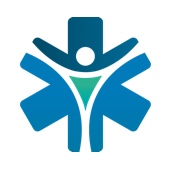California Prop 14 may change lives of sick kids, keep taxpayer funding of stem cell therapy research

While vaccines might take several months before they become available and affordable to everyone, treatments cannot be ready soon enough.
California Proposition 14 on the ballot asks whether residents of Californian wish to carry on with stem cell scientific research. A positive outcome would allocate $5.5 billion for stem cell research for the next 30 years.
Stem cell research was perceived to be unethical because of the involvement of human embryos. Although some research teams consider embryonic stem cells for potential therapies, the latest treatments focus on the individual person’s own cells or adult stem cells from screened, healthy donors.
Stem cell science has evolved beyond expectations. However, the progress into clinical use does not happen quickly enough. Researchers must test a new therapy or discovery across years of trial-and-error research.
Stem cells have been given to patients for rare diseases, such as severe combined immunodeficiency, also known as “bubble boy disease.” Besides, numerous clinical trials are testing stem cell therapies for conditions such as Parkinson’s disease, macular degeneration, Type 1 diabetes as well as heart disease.
“Even if a subset of stuff in the pipeline goes all the way, it will change the world for patients who currently don’t have other good options,” said Sean Morrison, a stem cell biologist in Dallas.
“It’s a pivotal time in the field,” said Dr. Deepak Srivastava, president of the Gladstone Institutes, a nonprofit research organization based in San Francisco. “We can feel that we’re at an inflection point, where after years of discovery and creating a foundation of knowledge, we’re finally at a point where a number of approaches are reaching clinical trials.”
Several researchers interviewed expressed that state funding helped make California a pioneer in global stem cell research.
George Daley, a stem cell biologist who is dean of Harvard Medical School, said he’s envious of the California researchers who have access to this pot of money.
“California has always been a very exciting place to pursue science, but prior to (the taxpayer funding), it wasn’t exactly the place that was the first on the tip of your tongue as a powerhouse community for stem cell science,” he said. “But there’s no way that today it wouldn’t be listed in the top three.”
Our Editorial Note: We have summarized an editorial that first appeared in the USA Today. You would need a subscription to read the content in its entirety. Contact us if you would like to learn more about regenerative medicine to treat patients with Covid-19.
MedAdvisor
info@medadvisor.co
